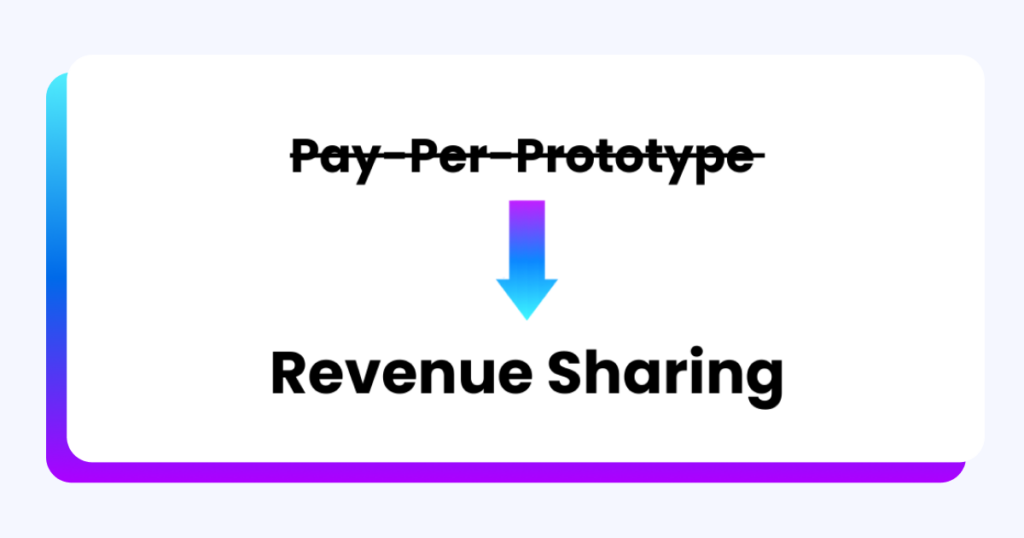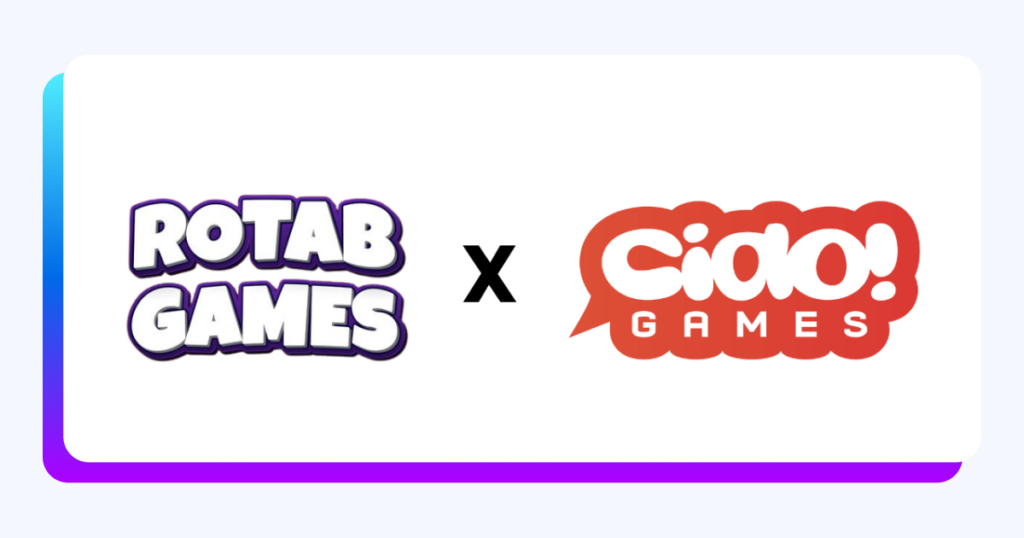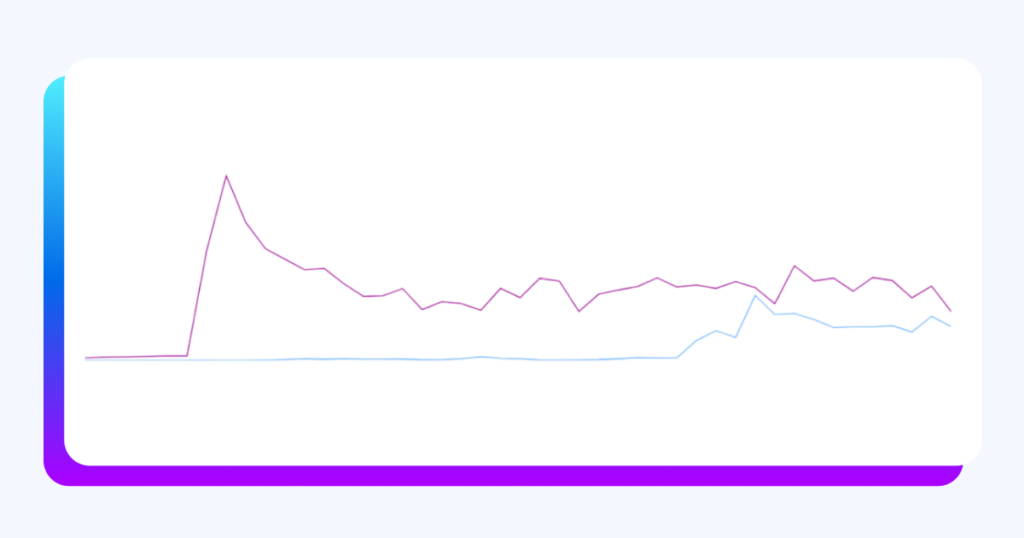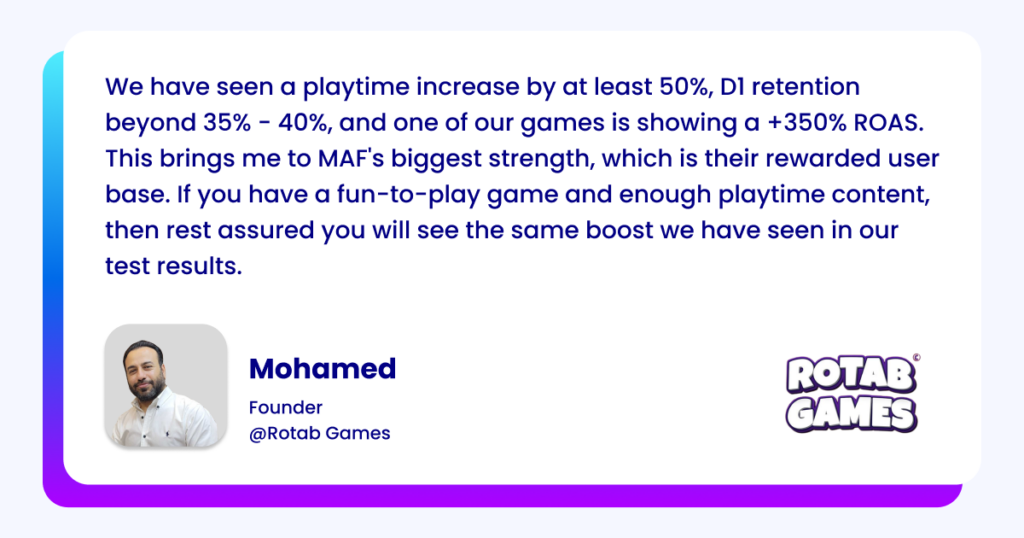Today, many game developers all over the globe are struggling to keep their businesses alive.
How can you adapt and survive?
To answer this question, we’re exploring today’s key mobile game publishing challenges, taking a close look at what works and what doesn’t.
As a bonus, we’re bringing you an exclusive story about a studio that nearly went bankrupt but managed to survive.
Today’s Mobile Game Publishing Challenges
The current mobile games market is a difficult place to be, especially for hyper-casual developers. Here are some of the biggest challenges they are currently dealing with:
- major competition
- players have endless options
- regulations are always changing
- the trend of hybrid-casual games
- rising cost of acquiring quality players
Today, the chances of creating a hit game are significantly lower than they were a few years ago. There are numerous games developed with the same mechanics, and standing out is extremely difficult.
In response to these market dynamics, game publishers have become increasingly demanding. Many of them have recently raised the bar on the KPIs developers must reach to get their games published.
It’s a struggle — approximately 1% of developed games make it to publication.
The Shift of Publishing Models
As a result of these game publishing challenges, some approaches that worked in the past are now becoming ineffective.
Both developers and publishers need to be ready to ditch “the good old ways” of doing things. It’s vital to explore new approaches and stay up to date with industry trends and changes.
It’s survival — fall behind, and you’re out of the game.
The key shift is happening with the models used for publishing games. Today, both publishers and studios are drifting away from the once-effective pay-per-prototype publishing model.
Why the Pay-Per-Prototype Publishing Model is Dead
For years, the pay-per-prototype (PPP) model has been widely accepted by the mobile gaming industry.
The premise of the PPP model is simple: developers get paid a flat-rate price for each prototype. In case the game takes off, everyone involved profits. If not, the developers earn enough to cover their costs and continue developing games.
The problem?
It can become counter-effective.
This model is tempting because it offers guaranteed payments, creating a sense of financial security. Due to this, many developers focus on making as many prototypes, hoping to get lucky.
The first problem with this model is prioritizing quantity over quality. Since these games are produced rapidly, they usually lack quality, decreasing their chances of long-term profitability.
However, the real problem happens when the publisher pulls the plug.
Being used to regular but modest payments, the developers often lack savings to survive before securing a new publishing deal.
The Revenue Share Model
In light of these game publishing challenges, many developers are rethinking their business model.

Currently, the revenue share model appears to be the best alternative to PPP.
In this model, the developer and publisher work together to share the revenue generated by a game. Naturally, for this to happen, the game needs to make a certain profit.
To make this possible, both sides contribute to the development process. The key to a successful collaboration is good communication, constant feedback, support, and of course, a fair revenue share.
Naturally, there is some risk.
As there are no guaranteed payments for prototypes, some developers may be hesitant to work on this model. But keep in mind that the publisher is in the same boat as the developer, so it’s in their best interests to help make the developed games successful.
How Ciao Games Helped a Studio Survive

To give you a true sense of today’s game publishing challenges, we’re sharing the story of a studio that nearly went bankrupt but managed to survive.
Verge of Bankruptcy
Rotab Games is a young game development studio based in Egypt, founded by an experienced game maker. For over a year, Rotab Games collaborated with a publisher on a pay-per-prototype model, earning enough to cover the studio’s costs.
Soon, they experienced the dark side of the PPP model.
The publisher decided to terminate the collaboration, leaving the developer to a bitter end. This unexpected cutoff left them vulnerable to financial distress, leading the studio to the verge of bankruptcy.
Survival Attempt
Collaborating with Ciao Games was crucial for Rotab Games’ survival. This mobile game publisher played a critical role in supporting the studio during this challenging period.
In an attempt to save the studio, Ciao Games immediately got to work.
They created a new game concept and crafted a design document (GDD) with a focus on low production costs and quick revenue turnaround.
Producing an Offerwall-Friendly Game
Ciao Games specializes in developing offerwall-friendly games.
They use their in-house UA solutions to drive quality traffic and adapt their games for maximum results. To do this, they continuously analyze offerwall trends, top-performing mechanics, and recent campaign results.
Guided by this, Ciao Games presented Rotab Games with an offerwall-friendly game idea, offering a choice between five well-performing mechanics. The studio then chose the mechanics they could implement quickly and easily, developing the game in just one week.
Immediate Results
The newly launched game has immediately shown positive results.

Ciao Games launched initial iOS campaigns in different regions, including worldwide and Tier 1 campaigns, which drove impressive ROAS:
- Worldwide ROAS: 420%
- Tier 1 ROAS: 442%
Once this test proved positive, they quickly optimized campaigns, expanded into new GEOs, and initialized Android campaigns to increase revenues.
The game’s initial campaigns also demonstrated strong retention rates. Day 1 retention was a solid 36% at first, but the publisher’s optimization efforts helped it reach an astounding 44%, exceeding typical benchmarks for hyper-casual games.
According to the studio’s owner, this was something they’d never witnessed before: “Compared to our other games under a different publisher and different advertising strategies, we achieved a maximum of 18% to 25% Day 1 retention.”
The publisher achieved these results by placing the ads for the game on the MyChips offerwall. They used its multireward ad format, which is well-known for driving quality users with high retention and ROAS.

The Recovery
Instead of waving the white flag, the studio began to recover.
In just two weeks after the game’s launch, Rotab Games received its first profit share transfer, bringing an instant sense of relief and satisfaction.
Hear more about the collaboration directly from Mohamed Rotab, the founder of Rotab Games:
“Working with Ciao Games and MAF’s team has been an inspiring experience. If I were to describe it in 2 words, that would be the “methodological approach” — a process where everything adds up to the final results and numbers.
Following their design guidance and monetization plans, we have witnessed significant improvements in numbers. We have seen a playtime increase by at least 50%, D1 retention beyond 35% – 40%, and one of our games is showing a +350% ROAS.
This brings me to MAF’s biggest strength, which is their rewarded user base. If you have a fun-to-play game and enough playtime content, then rest assured you will see the same boost we have seen in our test results.
My vision towards the way I build games has changed; I now understand how to monetize my games properly and how to turn them into “monetization engines” without affecting the user experience and engagement.
I learned all of that from those awesome guys at MAF and Ciao Games. The team is super friendly, and this encourages me to ask so many questions during the process, and I always get my answers in detail. Thank you, guys. :)”
You’re Also Facing Game Publishing Challenges?
Don’t wait until the risk of bankruptcy arises to start making changes. Reach out to Ciao Games today and let’s start tackling your game publishing challenges together!






